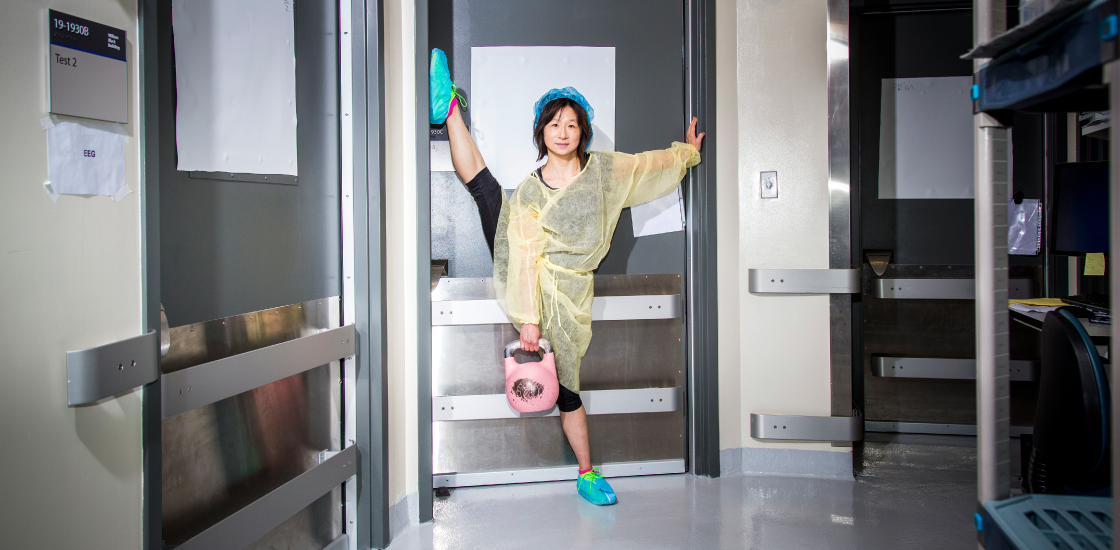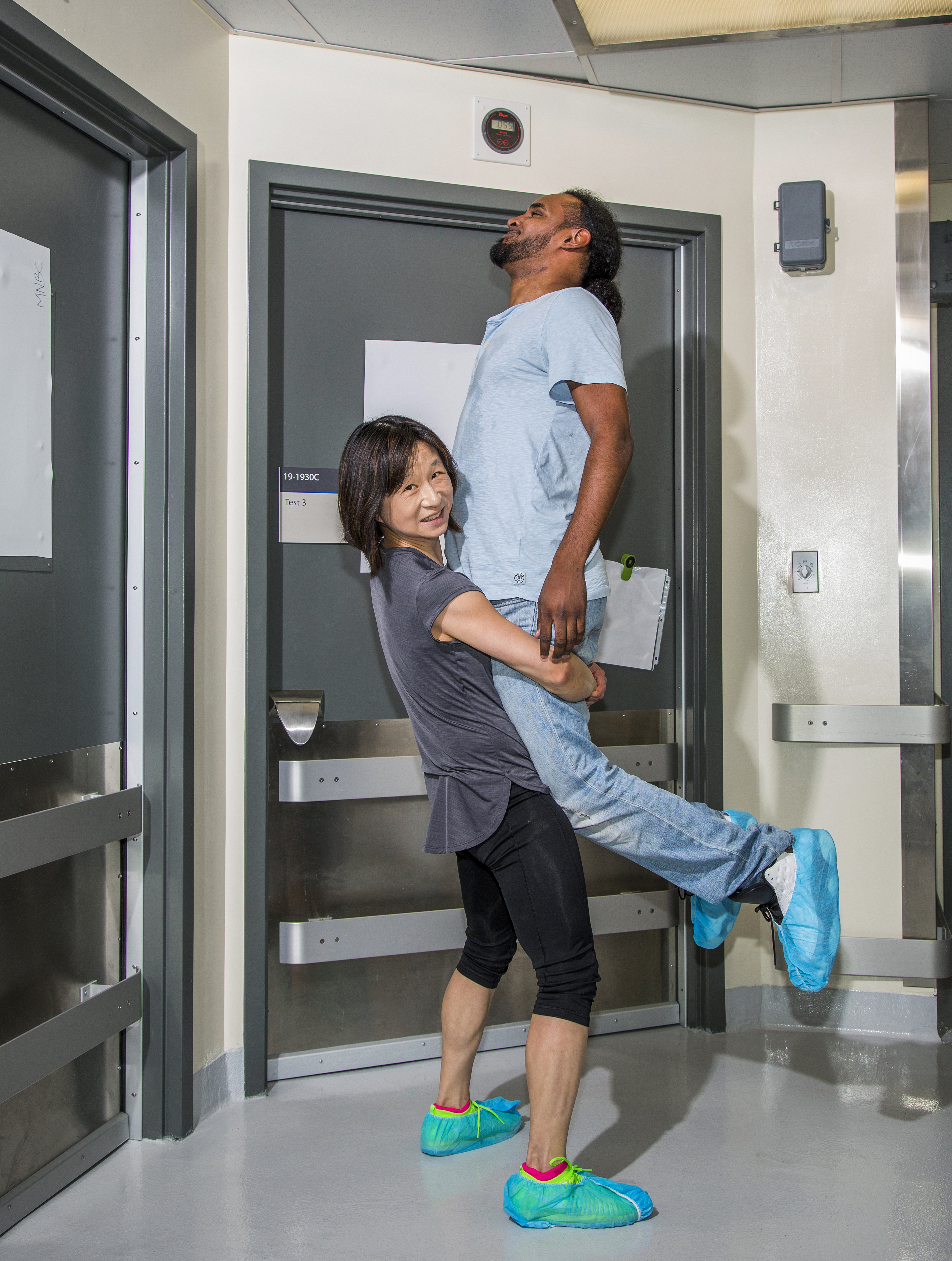Beyond the bench: A conversation with Mu Yang
Mu Yang spends her days watching mice and her evenings building muscle.

Mu Yang can lift seven times her body weight over the course of one minute. That knowledge gives Yang a quiet confidence in her work as founding director of the Mouse NeuroBehavior Core at Columbia University. The skill is also helpful around her lab: She never has to ask for help moving large tables or equipment.
Yang started kettlebell training seriously when she moved to New York City two years ago. Earlier this year, she won an award for lifting 4,536 pounds in 10 minutes. Lifting is her way of embracing a “crazy” city, she says, where people find and pursue their passion, no matter how unusual. “When I started to seek out my own identity in science and life, I discovered a new me,” she says. “I discovered that my mental strength, to a certain extent, highly correlated with my physical strength and endurance.”
At her lab, Yang’s team studies the behavior of mice that model myriad conditions, from heart defects to shoulder injuries. Yang previously spent a decade investigating the social behavior of mouse models of autism. She told Spectrum about how she uses social media and why she never listens to music.
Spectrum: What ‘big question’ drives your research?
Mu Yang: As a mouse behavioral neuroscientist, it worries me that the scientific community as a whole has a shared ignorance on the species differences between mice and men. Even more concerning is the fact that they are rather nonchalant about this ignorance. The assumption that mice are smaller and simpler versions of people is particularly troublesome with mouse models of complex neuropsychiatric conditions, such as autism.
S: Whose work do you admire?
MY: The work of my late graduate school supervisor, Robert Blanchard, who worked at the University of Hawaii at Manoa. He taught me the importance of understanding species-specific behaviors in the context of evolution and ethology. The foundation of my work was established in the Blanchard lab.
S: How much sleep do you get?
MY: Less than cats; more than most. For me, not sleeping enough is the best way to lose efficiency.
S: Do you listen to music, podcasts or white noise while you work?
MY: None. I don’t even listen to music when I work out. My brain is perpetually occupied by thoughts and I seldom need music to entertain me.
S: Tell us your favorite story from a research conference.
MY: That would be inappropriate.
S: What are you reading right now?
MY: “The Human Stain,” by Philip Roth and “By-Line,” a collection of stories and articles by Ernest Hemingway.
S: Are you active on social media?
MY: As a certified movement specialist and a competitive lifter, I have a decent following on Instagram. I use social media to promote a healthy lifestyle and to document my journey to strength, agility and mobility. I do not express or exchange political opinions on social media, however. And I do not use Twitter.
S: What is your lab’s mascot?
MY: A stuffed mouse, of course.

Recommended reading

Expediting clinical trials for profound autism: Q&A with Matthew State

Too much or too little brain synchrony may underlie autism subtypes
Explore more from The Transmitter

Mitochondrial ‘landscape’ shifts across human brain

